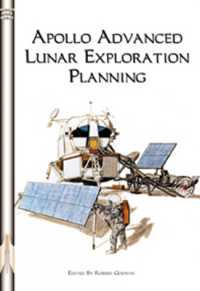- ホーム
- > 洋書
- > 英文書
- > Psychology
基本説明
A comprehensive and accessible look at the principles of child and adolescent neuropsychology.
Full Description
Professionals need clear recommendations for authentic developmental assessment of children and adolescents. This comprehensive and accessible book presents principles of child and adolescent neuropsychology with compelling case studies to demonstrate what a broad range of disorders look like in the real world. Assessment, educational and psychological implications, as well as evidence-based interventions and strategies, follow the cases. This is a unique and cutting-edge resource for school psychologists, counseling psychologists, school social workers, special educators, child psychiatrists, and pediatric neurologists.
Contents
Foreword ( George W. Hynd ). Preface. Acknowledgments. About the Authors. Chapter 1 Introduction to Pediatric Neuropsychology. What Is Pediatric Neuropsychology?. Neuropsychological Assessment. Interpretation. Why Neuropsychological Assessment?. Linking Assessment to Intervention. Concluding Comments. Chapter 2 Learning Disabilities: Reading Disability/Dyslexia. Definition. Etiology. Course and Prognosis. Evidence-Based Interventions. Case Study: Cord-Dyslexia. Concluding Comments. Chapter 3 Learning Disabilities: Dyscalculia/Math Disability. Definition. Etiology. Course and Prognosis. Evidence-Based Interventions. Case Study: Carl-Dyscalculia. Concluding Comments. Chapter 4 Specific Language Impairment/Dysphasia. Definition. Etiology. Course and Prognosis. Evidence-Based Interventions. Case Study: Naya-Dysphasia/SLI. Concluding Comments. Chapter 5 Autism Spectrum Disorders. Definition. Etiology. Course and Prognosis. Evidence-Based Interventions. Case Study: John-Asperger's Disorder. Concluding Comments. Chapter 6 Attention-Deficit/Hyperactivity Disorder. Definition. Etiology. Course and Prognosis. Evidence-Based Interventions. Case Study: Eddie-Attention-Deficit/Hyperactivity Disorder, Combined Type. Concluding Comments. Chapter 7 Tourette Syndrome. Definition. Etiology. Course and Prognosis. Evidence-Based Interventions. Case Study: Moses-Tourette Syndrome. Concluding Comments. Chapter 8 Traumatic Brain Injury. Definition. Course and Prognosis. Evidence-Based Interventions. Case Study: Gage-Traumatic Brain Injury. Concluding Comments. Chapter 9 Childhood Cancer. Definition. Etiology. Course and Prognosis. Evidence-Based Interventions. Case Study: David-Lymphocytic Leukemia. Case Study: Jay-Astrocytoma. Concluding Comments. Chapter 10 Epilepsy. Definition. Etiology. Course and Prognosis. Evidence-Based Interventions. Case Study: Zoey-Complex Partial Seizures with Temporal Lobe Origin. Case Study: Lane-Landau-Kleffner Syndrome (Epileptic Aphasia). Concluding Comments. Chapter 11 Cerebrovascular Disease: Focus on Sickle Cell Disease. Definition. Etiology. Course and Prognosis. Evidence-Based Interventions. Case Study: Lania-Sickle Cell Disease without Stroke. Case Study: Jed-Sickle Cell Disease with Stroke. Concluding Comments. Chapter 12 Low Birth Weight. Definition. Etiology. Course and Prognosis. Evidence-Based Interventions. Case Study: Emily-Extremely Low Birth Weight. Concluding Comments. Chapter 13 Environmental Toxin Exposure. Definition and Etiology. Course and Prognosis. Evidence-Based Interventions. Case Study: Demetric-Lead Exposure. Concluding Comments. Chapter 14 Neurotoxins, Pregnancy, and Subsequent Disorders. Definition and Etiology. Course and Prognosis: FASD and Illicit Drugs. Case Study: Caleb-Fetal Alcohol Syndrome. Course and Prognosis: Antiepileptics and FVS. Case Study: Keisha-Fetal Valproate Syndrome. Evidence-Based Interventions. Concluding Comments. Chapter 15 Chromosomal Anomalies. Autosomal Abnormalities: Down Syndrome. Fragile X. Williams Syndrome. Angelman Syndrome. Prader-Willi Syndrome. Case Study: George-Angelman Syndrome. Sex Chromosome Disorders. Case Study: Walter-Noonan Syndrome. Concluding Comments. Chapter 16 Neurocutaneous Disorders. Neurofibromatosis. Case Study: Gino-Neurofibromatosis Type 1. Tuberous Sclerosis Complex. Case Study: Hector-Tuberous Sclerosis. Sturge-Weber Syndrome. Case Study: Juliana-Sturge-Weber Syndrome. Concluding Comments. Chapter 17 Metabolic Disorders. Type 1 Diabetes. Case Study: Sam-Type 1 Diabetes. Phenylketonuria. Case Study: Vinnie-PKU. Mucopolysaccharide Disorders. Concluding Comments. Chapter 18 Looking Back, Looking Forward. Assessment to Intervention Planning in Pediatric Neuropsychology. Summary of Intervention Issues. Conclusion and Future Directions. References. Author Index. Subject Index.







